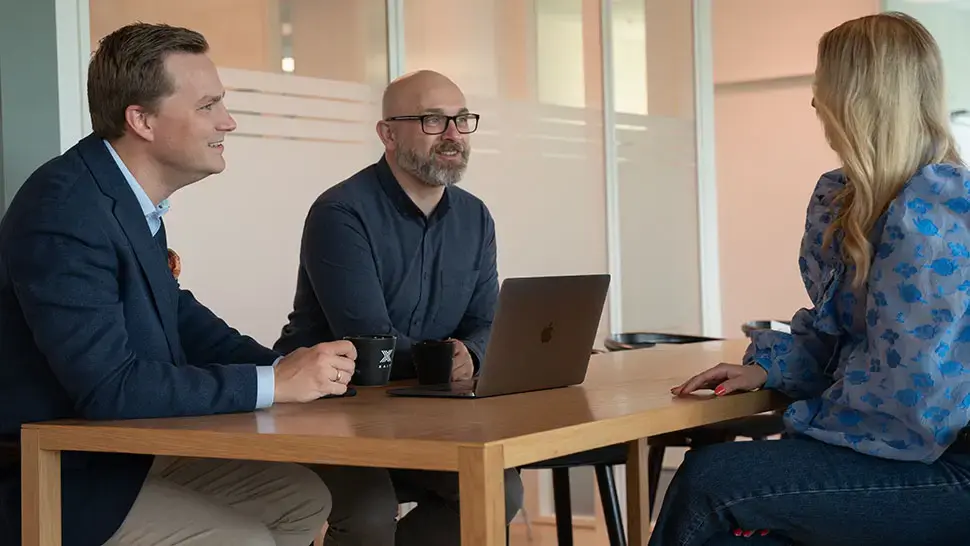In this blog post, we'll share the secrets of high-quality bids that increase your chances of winning contracts.
Competitive Tendering Challenges
Competitive tendering, also known as Invitation to Tender (ITT) or Request for Proposal (RFP), can be a challenging process, even for experienced businesses. By understanding these challenges and developing strategies to address them, you can increase your chances of winning contracts.
- Complex Tender Documents: Request for proposals can be complex and lengthy, involving hundreds of individual documents. Careful analysis is important to understanding and responding.
- Tight Deadlines: Tenders often have short deadlines, as well as multiple deadlines for different types of information. This makes it challenging to prepare a high-quality proposal.
- The Competition: Competition is fierce, often involving numerous similar vendors vying for the same project contract.
- Evaluation Criteria: Evaluation criteria is not always all-encompassing, making it challenging to prioritize key response sections.
- Limited Information: The organization may not provide sufficient information, making it difficult to understand enough about the project.
Competitive Tendering Strategies
Whether you are a seasoned professional or just starting out, these strategies will help you stand out from the competition.
Forecast Tenders for a Competitive Edge
Tender forecasting is a strategic tool for predicting and preparing to win tender opportunities. By adopting tender forecasting strategies into your bidding process, you will be able to predict tenders with increasing certainty.
- Identify Trends: Watch for shifts in economic trends and emerging technologies that can lead to new tenders.
- Follow Government Procurement Plans: Look for policies, initiatives, regulations, legislation and economic trends that might influence spending.
- Analyze Patterns: Examine past tender releases and their frequency. Look for patterns that might dictate trends or cycles for tender publication.
- Monitor Your Competition: Analyze contracts lost and won, including end dates and extension options. Look for interactions between representatives and buyers.
Use Pre-Qualification to Your Advantage
Some organizations prefer a pre-qualification response, or mini-proposal, while others use an online supplier database. Whichever you must submit, don't underestimate this step. It is your opportunity to showcase your business.
- Provide Thorough Information: We’ve seen organizations change their tender strategy mid-tender. Based on the pre-qualification quality they go straight to negotiations.
- Present Yourself: Your information is an indicator of what you are like to work with. Present your business as polished and professional and ready to problem-solve.
- Build Relationships: Communicate directly with the procurement team. There is an opportunity here to influence what they plan to include in the tender.
Interpret the Tender Requirements
Each tender provides valuable information about the organization’s needs and expectations. This information helps you identify risks, avoid costly mistakes, and tailor your bid and pricing for a competitive advantage.
- Read Between the Lines: Analyze the tender, looking for hidden meaning, especially in the executive summary and project timeline.
- Deconstruct the Requirements: Review and ask yourself what the questions might really be asking for, and why.
- Understand Evaluation Criteria: Read the requirements again, this time with the evaluation criteria in mind. Ask yourself how you can boost your score.
Tender Planning for Efficiency and Effectiveness
Effective planning increases your chances of succeeding at the bidding process. It secures the time you need to analyze and strategize your pursuit. It also helps you communicate your pursuit strategy to help contributors write to your expectations.
- Develop a Writing Package: Guide contributors by clearly defining win themes, discriminators and differentiators that promote your value proposition.
- Interpret Project Requirements: Identify vague requirements and define how your business interprets the meaning.
- Establish internal protocols: Define what high-quality content and team collaboration looks like. Establish communication channels and how to address scheduling conflicts and bottlenecks.
Use Caution with Clarification Questions
Clarifications are a double-edged sword. On the one hand, they demonstrate interest and eliminate unresponsive proposals. On the other hand, they can introduce potential strategy challenges and reveal them to your competition. Use caution.
- Discuss the Vague: Open a dialogue with your team to identify and discuss any vague or ambiguous requirements.
- Interpret the Vague: Discuss vague or ambiguous requirements and interpret for your team to give everyone a common understanding.
- Use Caution: Consider the impact of the clarification. It might be better to interpret and respond then open the door to a pursuit challenge. Or signal your competition to that challenge.
Personalize a Compelling Proposal that Stands Out
A well-crafted proposal can significantly improve your chances of winning tenders. It improves readability so evaluators understand your offer. This can build trust, mitigate risks, improve your evaluation score and differentiate you from the competition.
Remember, it’s not so much about what you think, but more about ensuring the readers hear what you mean.
- Put the Client First: Remember, it's about them, not you. Show you’ve done your research and understand the needs and goals by showcasing their challenges.
- Show, Don’t Tell: Show how you solve the problem by using descriptive language, anecdotes and visuals.
- Address Potential Concerns: Demonstrate you have a well-thought-out solution by acknowledging concerns and countering objections with data.
A Polished, Professional Tender Submission
A polished, professional bid positions you for success. It shows you care about the organization’s project and demonstrates your attention to detail and work ethic. This makes a great first impression that carries over into evaluation.
- Consistent Formatting: Unless otherwise required, choose a professional and easy-to-read font. Use white space to create a sense of balance that boosts readability.
- Powerful Headings: Use compelling headings to guide the reader and emphasize your value proposition.
- Visual Elements: Use high-quality visuals to enhance understanding and consistency to avoid disrupting reading flow.
- File Types: Test your layout and formatting with the required file types. Look for opportunities to improve what the organization sees on their end.
Debrief and Understand
Win or lose, a debrief is another valuable tool in the invitation to submit process. It helps you improve your process and content, as well as build more meaningful relationships with the organization.
- Win or Lose: Even when you win, it doesn’t mean your bid was perfect. Understand how the client perceived the success factors that led to the award.
- Avoid Arguing: Avoid the temptation to argue or criticize. Even if it appears the organization’s evaluation or instructions were flawed. You may want to work with them again.
- Additional Intel: Once the contract is awarded, communicate with other people for more detailed feedback. For example, how the decision went against you.
Leverage Lessons Learned for Improvement
Lessons learned reviews are important for competitive tendering because they help improve outcomes, transparency, and accountability. They can also help identify areas for improvement and inform future strategies and contract terms.
- Identify areas for improvement: Talk with your team about their experience. Look for ways to improve your process and content and boost efficiency and evaluation scores.
- Learn from Your Competitors: Identify what the competition did well. Look for patterns and intel you can use against them next time.
- Track Lessons Learned: Create an online space for documenting and tracking your lessons learned. Use this as a way to plan iterative improvements.
In the world of competitive tendering, using the process to your advantage is a competitive edge. By adopting these strategies, you can position your business for long-term growth and success.












